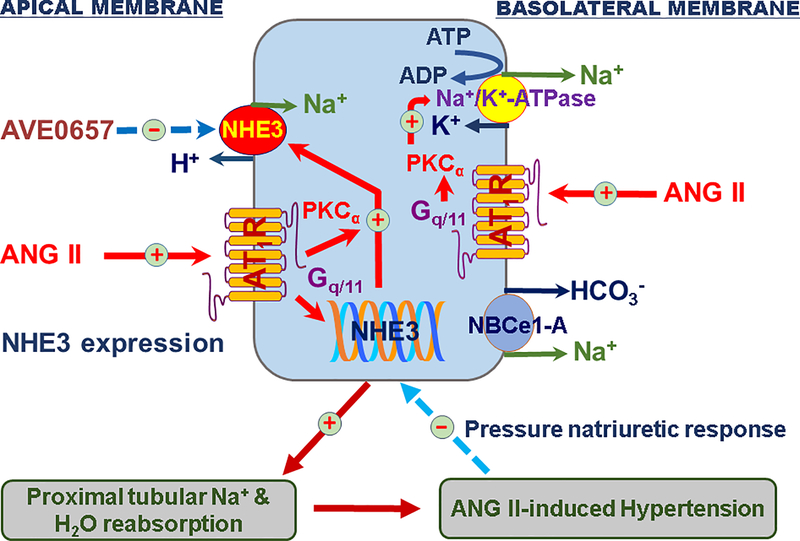Figure 6.
The important role of NHE3 in the proximal tubules of the kidney in the development of ANG II-dependent hypertension. We hypothesize that the circulating and intratubular ANG II binds to high affinity and high density of AT1 receptors on both apical and basolateral membranes of the proximal tubules and activates downstream signaling pathways such as protein kinase Cα (PKCα) to increase the expression and activity of NHE3 and Na+/K+-ATPase. The sustained upregulation of NHE3 and Na+/K+-ATPase by ANG II stimulates proximal tubular Na+ reabsorption, increases body Na+ and fluid retention, impairs the pressure-natriuresis response, and ultimately contributes to the development of ANG II-dependent hypertension.37 At the early stage of hypertension, the rise in arterial pressure induces the pressure-natriuresis response to prevent further increase in blood pressure. However, the pressure-natriuresis response resets to higher pressures during established hypertension. Modified from Reference 37 with permission.

